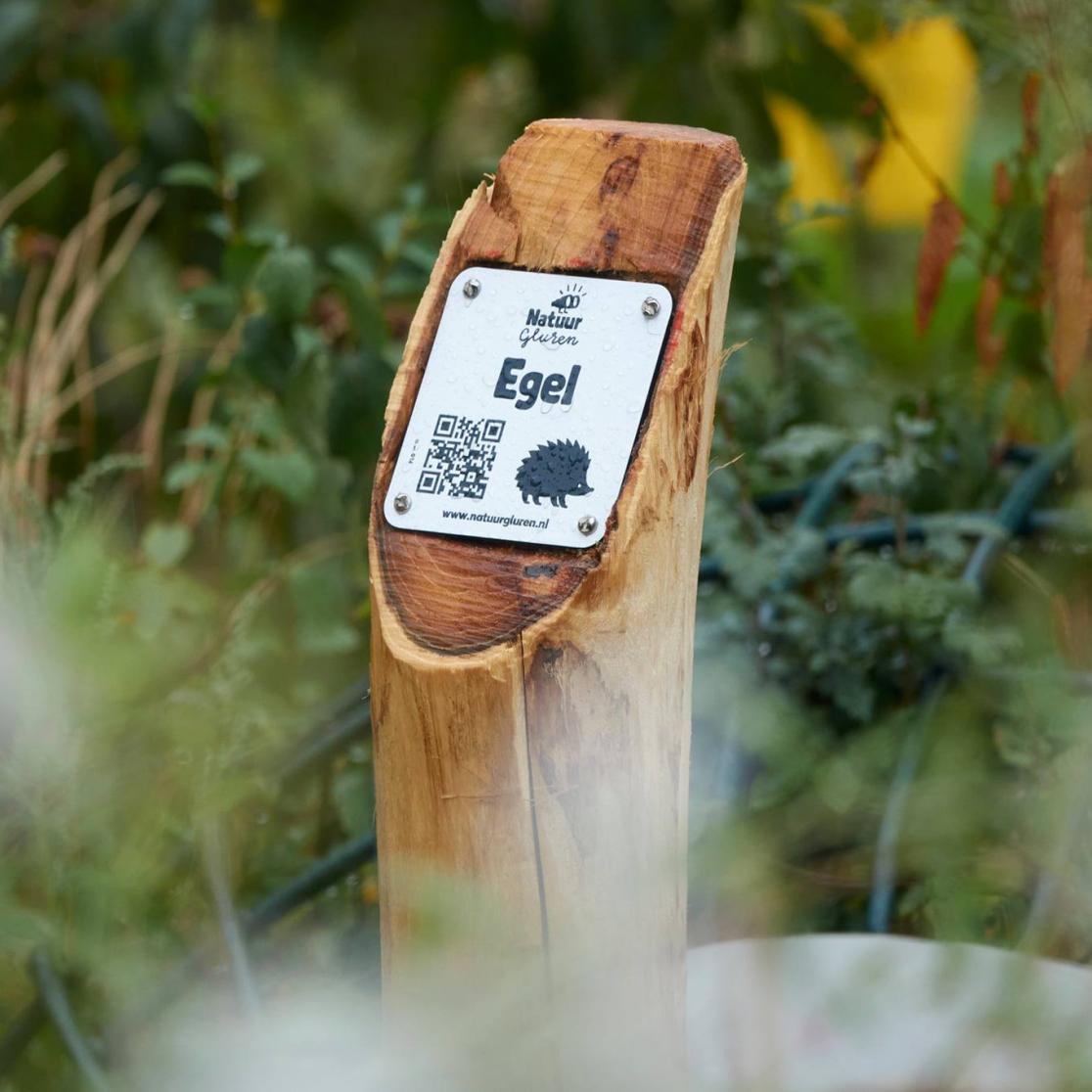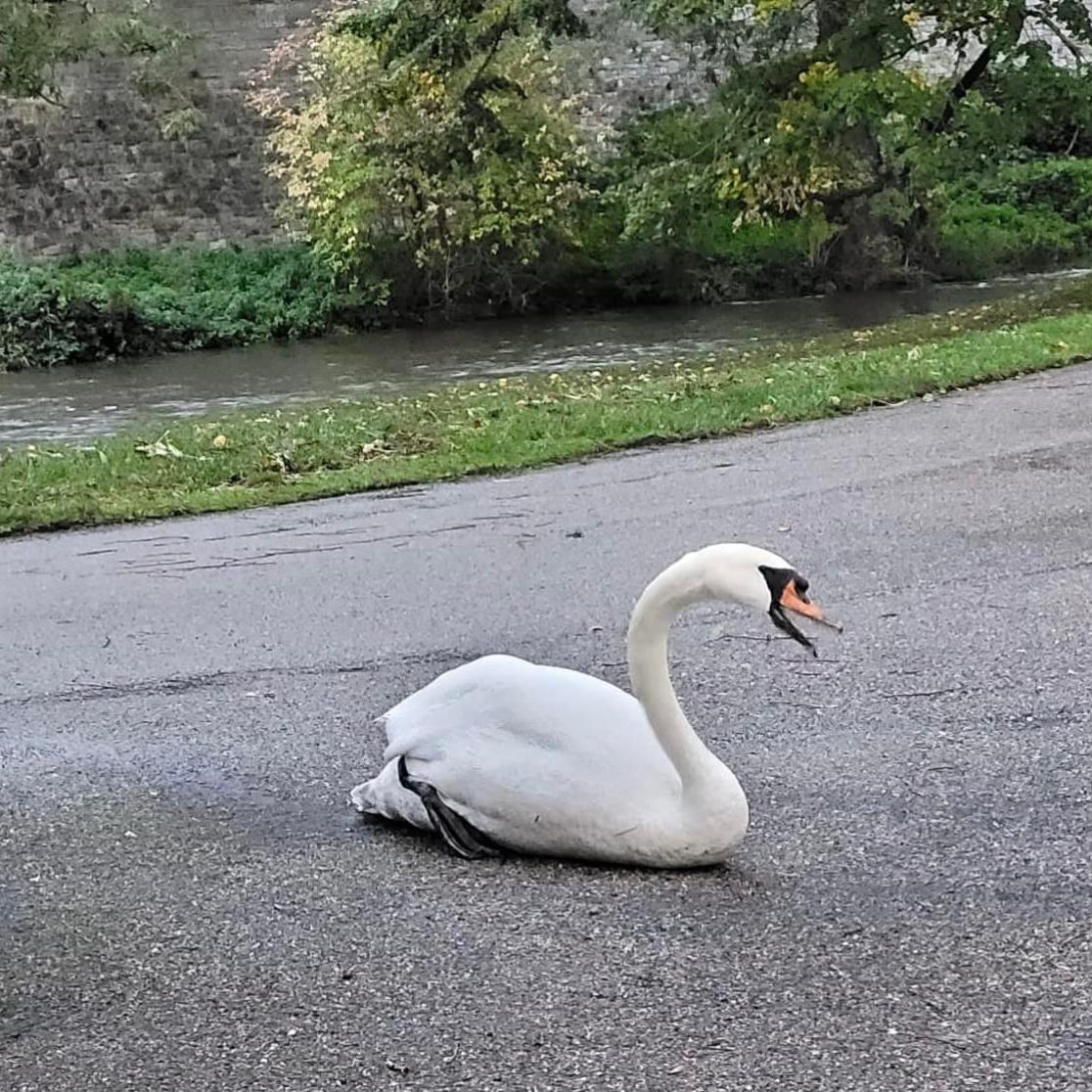“It starts with awareness” - meet Dr. Linnea van Griethuijsen
Biologist Dr. Linnea van Griethuijsen is working to revive Natuurgluren, a project that helps visitors discover the biodiversity hidden in Tapijn. Through research, community involvement, and clear communication, she’s making nature more visible and accessible to the public.
Could you please introduce yourself and explain what your work is on a daily basis?
My name is Linnea van Griethuijsen. I’m a biologist by training, and I’m currently a biology lecturer at Maastricht Science Programme. My main task here is teaching. I do some research on the side, but it’s minimal. I mainly teach the courses evolutionary biology, animal behaviour, and a small subfield called neuroethology—basically, the neural basis of natural behaviours in diverse animals. Besides that, I am also putting time being on the Board of Examiners.
What first drew you to biology, and how has that passion evolved into your current role?
Biology was my favourite subject in high school, so I naturally decided to study it. During my later studies, I was drawn toward the animal track. I did several research projects abroad, like studying bird flight in a large wind tunnel in Lund, Sweden. Eventually, I became interested in the combination of animal locomotion and the neural drivers of those behaviours. That led me to do my PhD in the United States, where I studied caterpillar locomotion. I lived there for almost eight years, and I also did a lot of teaching at a liberal arts college. When I returned to the Netherlands, the teaching experience I had, especially in English, aligned well with a job opening here. The only thing I had to adjust to was the PBL system, but it’s very interactive and great for concept-heavy subjects like biology. I’ve been here for ten years now.
What does biodiversity mean to you on a personal level, not just scientifically?
As someone who teaches evolutionary biology, I know the mechanism that has driven to this diversity that we see today, and I find it very fascinating. Right now, there’s a debate about whether we’re in the next mass extinction wave or not. Unlike previous ones, this time it’s mainly human-driven. So, there’s definitely some worry. But I believe it all starts with awareness. When people realise how much diversity exists in their backyard or local park, they’re more likely to care and take action regarding climate change. So, I think it starts with awareness.
For those unfamiliar, what is Natuurgluren, and what was its original vision?
Natuurgluren started around 2019. A group wrote a vision for Maastricht as a green city for the municipality, and they eventually won funding to start an awareness initiative. That became Natuurgluren, which is a play on words: “natuur” means nature, and “gluren” means peeking, so “peeking at nature.”
The idea was to raise awareness of nearby nature, especially the kind you don’t normally notice because it’s small, hidden, or active at odd hours. They focused on the Tapijn area and installed QR codes throughout the park. Scanning these leads to information, videos, or even live nest cams. It’s meant to make local nature visible and engaging.
I was involved with it as a teacher, offering students projects that had to do with biodiversity in the park. So, we had students looking at the bird species in the park, or if there is a difference between winter and summer and the type of plants. All kinds of systematic field studies. We also worked with camera traps and discovered that there are foxes roaming around in the parks, and there are beavers that swim up all the way to the city.
The person who ran the initiative passed away a year ago. There was a question of who would take over, and I initially said no because I was already busy. But eventually, I stepped in and now I consider it the outreach part of my job. I work with students on this, though we’re still figuring out exactly how to move forward. Students aren’t as into the QR codes, so we’ve also started focusing on storytelling via social media. But we still value the QR codes for the way they connect people with nature at the exact location. This is great, because you can check some information about something at that particular spot. But we also realize that there's so many other nice stories that you can tell about nature in Maastricht. We decided fairly quickly that we wouldn't limit ourselves to the defined area. We’ve expanded beyond Tapijn and placed camera traps in other areas like behind UM Sports.

Why was Tapijn chosen as the focus area, and what makes it unique in terms of biodiversity?
Tapijn is unique because it contains multiple elements that support different ecological niches. There’s the Jeker River, which brings water, seeds, and waterfowl. The city wall creates a microclimate that supports rare plants, some of which only exist in a few other Dutch locations. There’s also a small corridor of inaccessible land between the wall and the river that acts as a wildlife passage into the city. So Tapijn has a lot of interesting features packed into a small area.
What can an average visitor do to engage with the project or learn more?
First, if you’re in Tapijn, pull out your phone and scan the QR codes. You might learn something new, like about lichens or other easily overlooked species. Maastricht, and South Limburg in general, has a lot of species that are local here, but in terms of the Netherlands, they are rare. As a biology student, I actually travelled to this region to study biodiversity. Some butterflies, for example, only appear here because it’s the northern edge of their range. So even if you're not specifically looking for urban species, there’s a lot to discover.
Do you have a memorable story or encounter from this initiative?
A lot of the inspiring stories come from student projects. One group noticed that the water birds in Tapijn were being fed constantly, mostly bread, which isn’t great for them. The students monitored how much they were being fed and noticed that rats were also attracted to the leftovers. We even observed rats alongside the birds. The students ended up reporting their findings to the municipality, who were grateful since they don’t have the time to monitor that area themselves.
One particularly funny observation was that the birds became conditioned to a specific person on a scooter mobile who fed them. After a while, any scooter mobile passing by caused the ducks to rush over, expecting food. It was a classic example of conditioned behaviour, something you'd only notice through long observation.
These are the kind of things that you only notice when you sit down and observe something for a longer period of time. That’s why the QR codes are great: they are a quick way to give people a glimpse into the kind of stuff you might discover and help you point out where to look.

What is the upcoming BioBlitz Higher Education? What is the aim?
The BioBlitz is a biodiversity-focused event running from May 22 to June 22. As it is a collective BioBlitz, many other Dutch universities and Hoge scholen participate in it. UM participates for the first time, and the focus is to recognize and look at the biodiversity around the UM buildings. During this month, participants are encouraged to record as many species and organisms as they can in a short time span. People can upload their findings using an app called ObsIdentify to take, which recognises what the species is. Then the pictures are uploaded to an observation platform. People can become more aware of the species around them.
If you know what's around you, you care more about your environment, and that hopefully will influence your behaviour for the better.
What would an ideal future for urban biodiversity in Maastricht look like to you?
Maastricht is already a very nice green area – they might be connected a bit better to the city centre. There are also options for the university, how we maintain our grounds, but that’s also being looked into. A really nice example is the bee hotspots, where we’ll definitely go during our BioBlitz. Ideally, the more awareness we create, the more spaces we can create that are better adapted for humans and all kinds of other species to live together.